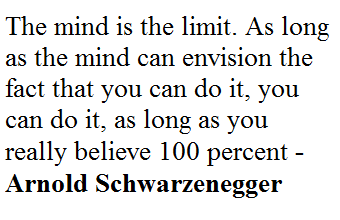Nutrition: Cholesterol
Cholesterol is an organic molecule in our body that is essential for life. It is vital for the maintenance of cell membranes as well as the synthesis of vitamins and steroid hormones (including sex hormones and bile acids).
It exists in 2 forms – unesterified or “free” (UC) and esterified (CE) – and the form determines if we can absorb it or not, or store it or not (among other things). Much of the cholesterol we eat is in the form of CE. It is not absorbed and is excreted by our gut.Eating cholesterol has very little impact on the cholesterol levels in your body. Most (around 75%) of the cholesterol in our body is made by our body. Of that, 20% is created by our liver and 80% from other cells in our body.
Now that we know dietary cholesterol alone is not much of a problem let us move on to what is.
Regulation
The process of regulating cholesterol is extremely complicated.
To be carried anywhere in our body, for example from your liver to your coronary artery, they need to be carried by a protein-wrapped transport vessel called a lipoprotein.
Special proteins, apoproteins, play an important role in moving lipoproteins around the body and facilitating their interactions with other cells. The most important of these are the apoB class, residing on VLDL, IDL, and LDL particles, and the apoA-I class, residing for the most part on the HDL particles.
Cholesterol transport in plasma occurs in both directions, from the liver and small intestine towards the periphery and back to the liver and small intestine (the “gut”).
Measuring Cholesterol Levels
Due to the high cost of directly measuring HDL and LDL protein particles, blood tests are commonly performed for the surrogate value, HDL-C.
Atherosclerosis
The progression from a completely normal artery to an atherosclerotic one follows this path: a particle containing apoB gets past the endothelial layer into the subendothelial space, the particle and its cholesterol content is retained, immune cells arrive, an inflammatory response ensues “fixing” the apoB containing particles in place AND making more space for more of them.
While inflammation plays a key role in this process, it is the penetration of the endothelium and retention within the endothelium that drive the process.
What is important to note is the large impact apoB has on causing atherosclerosis.
LDL
The most common apoB containing lipoprotein in this process is certainly the LDL particle. If you want to stop atherosclerosis, you must lower the amount of LDL particles for the reasons explained above.
At first, it would seem that patients with smaller LDL particles are at greater risk for atherosclerosis than patients with large LDL particles, all things equal. However the only thing that actually matters is the number of LDL particles.
LDL particles are the main force driving atherosclerosis hence why they are branded "bad".
HDL
HDL particles remove fats and cholesterol, from cells, including within artery wall atheroma and transport it back to the liver for excretion or re-utilization, hence cholesterol carried within HDL particles (HDL-C) is sometimes called "good" (despite the fact that it is exactly the same as the cholesterol in LDL particles).
Those with higher levels of HDL-C tend to have fewer problems with cardiovascular diseases, while those with low HDL-C cholesterol levels have increased rates for heart disease. Higher HDL levels are correlated with better cardiovascular health.
Thus you should note that your HDL level is important, and more HDL particles are better than few.
With Age?
Usually your body will account for any increase in dietary cholesterol by producing less itself, thus allowing cholesterol levels to be maintained with a small range.
However with age your body stops accounting for any additional cholesterol and this can cause the problems associated with high blood cholesterol levels.
Improving HDL/LDL Ratios
There are a variety of ways to do this:
- Lose weight (if over weight) to reduce LDL;
- Quit smoking as it reduces HDL levels;
- Exercise to increase HDL levels;
- Reduce dietary saturated fats, these are the largest dietary component to increasing LDL levels;
- Reduce dietary trans fats, these reduce HDL and raise LDL levels;
- High fiber foods (beans, peas, lentil, chickpeas, oats, fruit, vegetables) can reduce cholesterol levels;
- Almonds, Barley and Blueberries reduce LDL levels;
- Avocados lower LDL and raise HDL levels;
- Oats raise HDL levels.
Conclusion
Eating foods with cholesterol in are not bad for you solely because of their cholesterol amounts, you need cholesterol to live, and most of the cholesterol you consume is not absorbed by the body.
The only bad cholesterol is the cholesterol that ends up in the walls of our arteries and lead to inflammation, and how does it get there? Via LDL particles, not the cholesterol it contains.
If you have any question then feel free to contact us.


